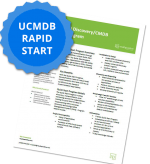Feeling Isolated? HP UFT can solve that.
By: Matt Angerer, Joey Howe
The days of isolated software with few interfaces are long since past. SOAP and REST APIs (Application Programming Interfaces) are commonplace in most web-based architectures. Composite, cloud-based software applications are the new norm and software hosted on-premise is bound to be tightly integrated with cloud-based applications outside your firewall. Companies now embrace velocity and ease-of-use when sending and consuming data from 3rd party applications.
Take for example the process of tax determination for a multi-national company. Why maintain and continually update complex tax rules internally when you can turn this over to a 3rd party with a Web Services call? Or, consider the consumption of purchase orders via Web Services or EDI with over 150 trading partners that each maintain their own set of implementation guidelines… you can see how quickly the complexity increases. The more interfaces introduced, the more complex and risky your world becomes as a Product Owner or Project Manager. We are living in a time of unprecedented technological change.
The concepts introduced with Agile have disrupted standard automation practices. The ‘traditional’ methods of automated testing over a GUI (point, click, record) are now replaced with the need to ‘dig deeper’ and test at the API level. Don’t wait until User Acceptance Testing to begin verifying those complex interfaces that feed into your software.
In a recent QA Tech Talk (posted below), we explored this topic in-depth and provide you with a live demonstration of using HP UFT to test APIs. Your organization can start creating a comprehensive interface testing strategy with HP UFT as its technology cornerstone. Contact us today for an in-depth discussion of your existing interface testing strategy and how HP UFT can help flesh out defects earlier in the delivery lifecycle.
Subscribe for the latest RP Blog Updates:











